#interior design nebraska
Photo
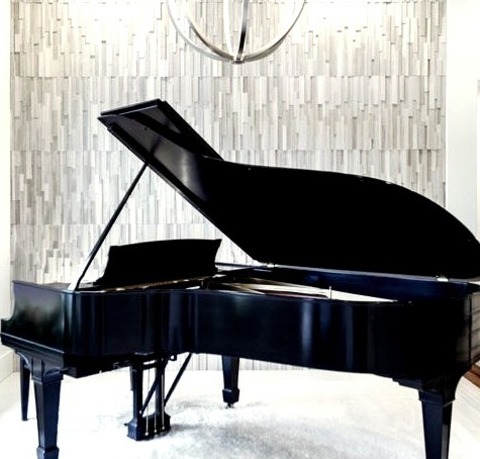
Family Room Music Room
Example of a large, modern, open-concept family room with a white floor, gray walls, a music area, and no fireplace or television.
0 notes
Photo

Contemporary Closet
Inspiration for a large contemporary women's concrete floor walk-in closet remodel with open cabinets and medium tone wood cabinets
#interior design kansas city#interior design nebraska#custom closet des moines#poliform#poliform closet#interior design omaha
0 notes
Photo
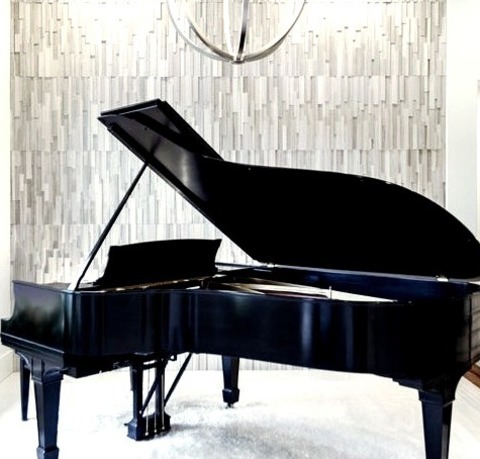
Family Room Music Room
#Example of a large#modern#open-concept family room with a white floor#gray walls#a music area#and no fireplace or television. poliform#interior design nebraska#cassina#modern dining table#ligne roset
0 notes
Photo
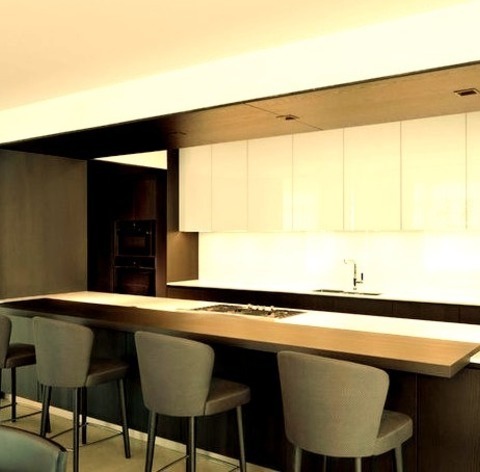
Great Room Kitchen
#Example of a large trendy galley concrete floor open concept kitchen design with a drop-in sink#flat-panel cabinets#dark wood cabinets#quartzite countertops#white backsplash#glass sheet backsplash#black appliances and no island poliform kitchen#kitchen minneapolis#interior design nebraska#interior design minneapolis#interior design des moines#poliform closet
0 notes
Text
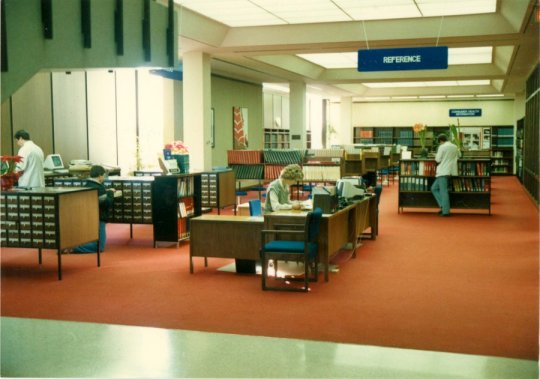
McGoogan Health Sciences Library, University of Nebraska Medical Center, Omaha. Leo A. Daly.
#brutalism#brutalist#architecture#interior#design#interiors#nebraska#university#mcgoogan#library#leo daly#omaha
105 notes
·
View notes
Video
youtube
I have suppressed all memories of making this video. All I know for sure is that remembering anything about it would kill me dead.
6 notes
·
View notes
Text
December 4th: Buffaloes
“From ocean to ocean”—so say the Americans; and these four words compose the general designation of the “great trunk line” which crosses the entire width of the United States. The Pacific Railroad is, however, really divided into two distinct lines: the Central Pacific, between San Francisco and Ogden, and the Union Pacific, between Ogden and Omaha. Five main lines connect Omaha with New York.
New York and San Francisco are thus united by an uninterrupted metal ribbon, which measures no less than three thousand seven hundred and eighty-six miles. Between Omaha and the Pacific the railway crosses a territory which is still infested by Indians and wild beasts, and a large tract which the Mormons, after they were driven from Illinois in 1845, began to colonise.
The journey from New York to San Francisco consumed, formerly, under the most favourable conditions, at least six months. It is now accomplished in seven days.
It was in 1862 that, in spite of the Southern Members of Congress, who wished a more southerly route, it was decided to lay the road between the forty-first and forty-second parallels. President Lincoln himself fixed the end of the line at Omaha, in Nebraska. The work was at once commenced, and pursued with true American energy; nor did the rapidity with which it went on injuriously affect its good execution. The road grew, on the prairies, a mile and a half a day. A locomotive, running on the rails laid down the evening before, brought the rails to be laid on the morrow, and advanced upon them as fast as they were put in position.
The Pacific Railroad is joined by several branches in Iowa, Kansas, Colorado, and Oregon. On leaving Omaha, it passes along the left bank of the Platte River as far as the junction of its northern branch, follows its southern branch, crosses the Laramie territory and the Wahsatch Mountains, turns the Great Salt Lake, and reaches Salt Lake City, the Mormon capital, plunges into the Tuilla Valley, across the American Desert, Cedar and Humboldt Mountains, the Sierra Nevada, and descends, viâ Sacramento, to the Pacific—its grade, even on the Rocky Mountains, never exceeding one hundred and twelve feet to the mile.
Such was the road to be traversed in seven days, which would enable Phileas Fogg—at least, so he hoped—to take the Atlantic steamer at New York on the 11th for Liverpool.
The car which he occupied was a sort of long omnibus on eight wheels, and with no compartments in the interior. It was supplied with two rows of seats, perpendicular to the direction of the train on either side of an aisle which conducted to the front and rear platforms. These platforms were found throughout the train, and the passengers were able to pass from one end of the train to the other. It was supplied with saloon cars, balcony cars, restaurants, and smoking-cars; theatre cars alone were wanting, and they will have these some day.
Book and news dealers, sellers of edibles, drinkables, and cigars, who seemed to have plenty of customers, were continually circulating in the aisles.
The train left Oakland station at six o’clock. It was already night, cold and cheerless, the heavens being overcast with clouds which seemed to threaten snow. The train did not proceed rapidly; counting the stoppages, it did not run more than twenty miles an hour, which was a sufficient speed, however, to enable it to reach Omaha within its designated time.
There was but little conversation in the car, and soon many of the passengers were overcome with sleep. Passepartout found himself beside the detective; but he did not talk to him. After recent events, their relations with each other had grown somewhat cold; there could no longer be mutual sympathy or intimacy between them. Fix’s manner had not changed; but Passepartout was very reserved, and ready to strangle his former friend on the slightest provocation.
Snow began to fall an hour after they started, a fine snow, however, which happily could not obstruct the train; nothing could be seen from the windows but a vast, white sheet, against which the smoke of the locomotive had a greyish aspect.
At eight o’clock a steward entered the car and announced that the time for going to bed had arrived; and in a few minutes the car was transformed into a dormitory. The backs of the seats were thrown back, bedsteads carefully packed were rolled out by an ingenious system, berths were suddenly improvised, and each traveller had soon at his disposition a comfortable bed, protected from curious eyes by thick curtains. The sheets were clean and the pillows soft. It only remained to go to bed and sleep which everybody did—while the train sped on across the State of California.
The country between San Francisco and Sacramento is not very hilly. The Central Pacific, taking Sacramento for its starting-point, extends eastward to meet the road from Omaha. The line from San Francisco to Sacramento runs in a north-easterly direction, along the American River, which empties into San Pablo Bay. The one hundred and twenty miles between these cities were accomplished in six hours, and towards midnight, while fast asleep, the travellers passed through Sacramento; so that they saw nothing of that important place, the seat of the State government, with its fine quays, its broad streets, its noble hotels, squares, and churches.
The train, on leaving Sacramento, and passing the junction, Roclin, Auburn, and Colfax, entered the range of the Sierra Nevada. ’Cisco was reached at seven in the morning; and an hour later the dormitory was transformed into an ordinary car, and the travellers could observe the picturesque beauties of the mountain region through which they were steaming. The railway track wound in and out among the passes, now approaching the mountain-sides, now suspended over precipices, avoiding abrupt angles by bold curves, plunging into narrow defiles, which seemed to have no outlet. The locomotive, its great funnel emitting a weird light, with its sharp bell, and its cow-catcher extended like a spur, mingled its shrieks and bellowings with the noise of torrents and cascades, and twined its smoke among the branches of the gigantic pines.
There were few or no bridges or tunnels on the route. The railway turned around the sides of the mountains, and did not attempt to violate nature by taking the shortest cut from one point to another.
The train entered the State of Nevada through the Carson Valley about nine o’clock, going always northeasterly; and at midday reached Reno, where there was a delay of twenty minutes for breakfast.
From this point the road, running along Humboldt River, passed northward for several miles by its banks; then it turned eastward, and kept by the river until it reached the Humboldt Range, nearly at the extreme eastern limit of Nevada.
Having breakfasted, Mr. Fogg and his companions resumed their places in the car, and observed the varied landscape which unfolded itself as they passed along the vast prairies, the mountains lining the horizon, and the creeks, with their frothy, foaming streams. Sometimes a great herd of buffaloes, massing together in the distance, seemed like a moveable dam. These innumerable multitudes of ruminating beasts often form an insurmountable obstacle to the passage of the trains; thousands of them have been seen passing over the track for hours together, in compact ranks. The locomotive is then forced to stop and wait till the road is once more clear.
This happened, indeed, to the train in which Mr. Fogg was travelling. About twelve o’clock a troop of ten or twelve thousand head of buffalo encumbered the track. The locomotive, slackening its speed, tried to clear the way with its cow-catcher; but the mass of animals was too great. The buffaloes marched along with a tranquil gait, uttering now and then deafening bellowings. There was no use of interrupting them, for, having taken a particular direction, nothing can moderate and change their course; it is a torrent of living flesh which no dam could contain.
The travellers gazed on this curious spectacle from the platforms; but Phileas Fogg, who had the most reason of all to be in a hurry, remained in his seat, and waited philosophically until it should please the buffaloes to get out of the way.
Passepartout was furious at the delay they occasioned, and longed to discharge his arsenal of revolvers upon them.
“What a country!” cried he. “Mere cattle stop the trains, and go by in a procession, just as if they were not impeding travel! Parbleu! I should like to know if Mr. Fogg foresaw this mishap in his programme! And here’s an engineer who doesn’t dare to run the locomotive into this herd of beasts!”
The engineer did not try to overcome the obstacle, and he was wise. He would have crushed the first buffaloes, no doubt, with the cow-catcher; but the locomotive, however powerful, would soon have been checked, the train would inevitably have been thrown off the track, and would then have been helpless.
The best course was to wait patiently, and regain the lost time by greater speed when the obstacle was removed. The procession of buffaloes lasted three full hours, and it was night before the track was clear. The last ranks of the herd were now passing over the rails, while the first had already disappeared below the southern horizon.
It was eight o’clock when the train passed through the defiles of the Humboldt Range, and half-past nine when it penetrated Utah, the region of the Great Salt Lake, the singular colony of the Mormons.
16 notes
·
View notes
Text
Things to Do in Omaha, Nebraska
There are numerous things to do in Omaha, Nebraska. With its background of wagon trains, railroading leaders, as well as western pioneers, Omaha has something for everyone. Whether you delight in the outdoors or art, Omaha has something to provide. The art scene in Omaha uses a mix of old and also new structures. From 20th century design to art deco, there is something to please any type of preference.
For art lovers, there are many museums in Omaha, including the Joslyn Art Museum. This art gallery has been around for 90 years as well as is considered among one of the most noticeable art establishments in the city. The museum features a revolving collection of long-term and unique exhibitions.
You can spend some time in the Joslyn Art Museum, which is complimentary and available to the general public. This museum is home to the biggest art collection in Nebraska. The marble-built building has more than 11,000 screens from musicians spanning from classical times to the here and now day. There is also a sculpture garden and cafe. You can spend a mid-day or night appreciating the art on display screen at this museum.
If you have children, a journey to the General Crook Residence gallery is a fantastic method to educate them concerning Omaha's history. The gallery was originally built for school teams, yet it has periodically open up to the general public. The museum also hosts a special trick-or-treat occasion on Halloween. The museum is also home to the Omaha Children's Museum, which was founded in 1976.
The museum includes nine interior and outdoor displays, with a range of displays that discover scientific research, modern technology, art, and also zoology. The museum likewise features a Splish Splash Garden, which is open from Memorial Day to Labor Day.

One more tourist attraction worth a go to in Omaha is the Henry Doorly Zoo and Fish Tank. The zoo has a number of points of interest, including the biggest indoor jungle in the USA. You can also go through a 70-foot-high tunnel, where you can see sea turtles and sharks.
For the youngsters, the park additionally has a large collection of Native American art work. This display is complimentary to check out, although you might require to purchase tickets to check out some unique displays. Whether you're going to with children or moms and dads, this display makes certain to make any household time more enjoyable.
One more tourist attraction that is enjoyable for families is the Omaha Farmers Market, which features a variety of suppliers and also a historical feel. It's also a great area for relaxing as well as buying. Later on, check out the Zorinsky Lake Park, where you'll have the ability to invest some time outdoors as well as take in the scenery.
Another location to visit in Omaha is the Heartland of America Park, which is positioned in the city center. It is house to the renowned 250-foot water fountain, a walking trail, and boat flights on the lake. An additional wonderful destination in the city is the Fun-Plex Waterpark and Rides, which is Omaha's own amusement park. The park also flaunts a wave swimming pool and also water slides, along with bumper watercrafts and go-kart auto racing. You can likewise take your family on a trip on a miniature roller coaster.
Omaha has something to do for every period. The springtime and also summer have lots of celebrations, concerts, as well as fireworks, while autumn and winter months have even more farmland and also haunted houses. Omaha additionally has an indoor theme park, the RiverFront, which is a public-private initiative that is a three-park development.
For outside lovers, the city is home to a plethora of lakes and parks. Whether you're trying to find a peaceful area to relax or an energetic activity, Omaha has something for everybody. The Dundee Community is house to some special tourist attractions and a scrumptious food scene. There are several dining establishments in the location that supply excellent food, including the popular Kith & Kin Southern Kitchen as well as the Avoli Osteria. If you wish to shop, there are numerous excellent retail stores that deserve having a look at.
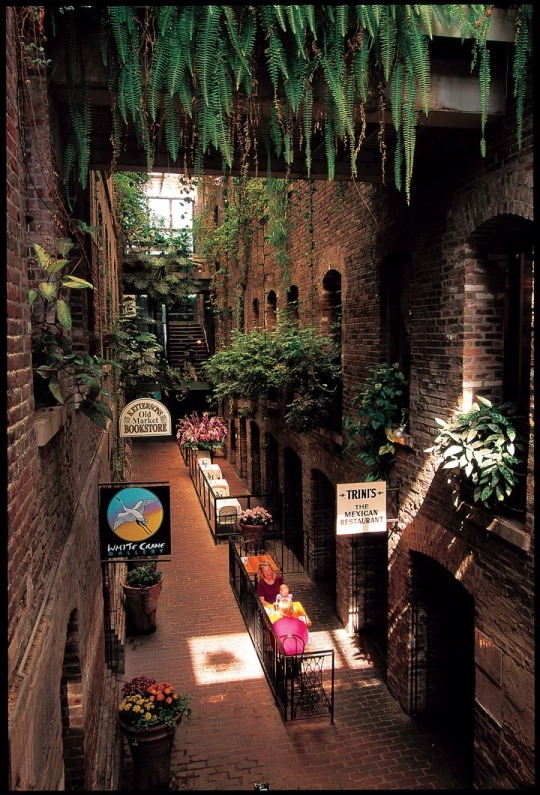
The Bob Kerrey Pedestrian Bridge is just one of the many stunning views in Omaha. It is free to stroll throughout as well as looks sensational at night. Located near Omaha Plaza, the bridge extends a number of thousand feet and also is ideal for cycling or walking.
The Old Market is another location worth looking into. The city's historic area is home to many elegant restaurants and unique stores.
On this city, you can count with Blingle! When you intend to mount brand-new lights at your office or home room, you can work with a specialist blingle lighting contractor to create a style that will certainly match your design. On Blingle! specialists comply with a comprehensive procedure to make certain that you're satisfied with the outcome. They will certainly see your home to evaluate its requirements and also requirements as well as will certainly produce a digital depiction of the home with illumination. After that, they will certainly set up installation and also supply continuous maintenance.
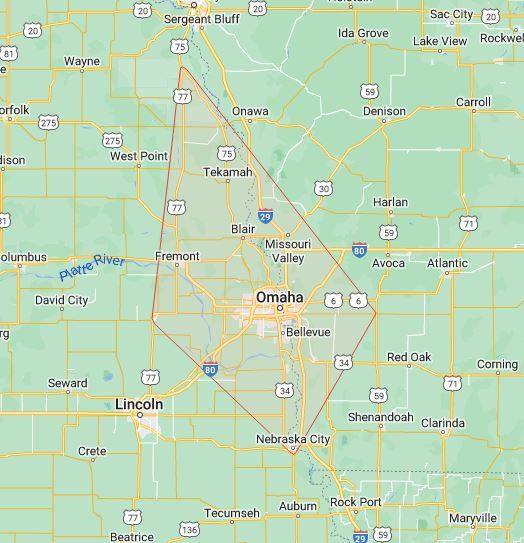
Blingle!
18735 F Street Omaha, NE 68135
402-838-2046
https://blingle.com/omaha-ne
3 notes
·
View notes
Text
Beer Events 1.6
Events
Nebraska ratified the 18th Amendment, they were the 36th state needed to adopt Prohibition (1919)
Jimmy Carter had an encounter with a UFO (1969)
Karl Koch patented an ornamental design for a Beer Can (1970)
Schlitz patented a Method & Apparatus for Applying a Coating to the Interior Surface of a Hollow Article (1970)
Anheuser-Busch's Fairfield, California brewery made its 1st beer shipments (1977)
Rex Kotschwar patented a Beverage Cooler (1981)
Randy & Richard Lea patented a Keg Cooler (1987)
Anchor Distilling founded (1993)
Portland Brewing released "The Governator" beer, prompting public figure Arnold Schwarzenegger to bully and sue (2004)
Draughtscale for Weighing Draught Beer patented (2005)
Beer Can with Top and Bottom Pull Tabs patented (2011)
Breweries Opened
Sunday River Brewing (Maine; 1993)
Banff Brewery (Alberta, Canada; 1995)
Beermann's Beerworks (California; 2000)
I & I Brewing (California; 2012)
0 notes
Text
What Structures Can Nebraska Metal Building Contractors Build?
Metal construction is one of the fastest-growing trends in Omaha. If you are looking to get a metal building or simply want to consider it for your next construction project, read this blog to understand the types of buildings provided by Nebraska Metal Building Contractors.
Types of Metal Buildings:
Metal builders in Omaha provide two types of metal buildings:
Commercial metal buildings
Residential metal buildings
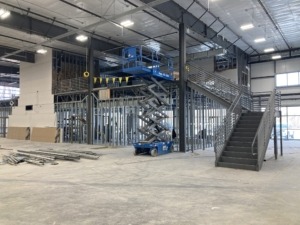
Structures such as warehouses, shops, and industrial and agricultural buildings are called commercial buildings. And as the name suggests, residential buildings are the ones in which we live.
What Are the Needs of Metal Buildings?
Metal structures require insulation and temperature control.
Buildings like warehouses and stores have large size requirements.
Offices mostly need to be well-designed and aesthetically unique.
Homes, shops and offices require proper ventilation and interiors.
Owners mostly ask for tailored designs and construction.
A metal building needs an experienced builder who understands the ins and outs.
Conclusion
Finding trustworthy Metal Building Contractors in Omaha can provide custom metal structures. Lacey Construction Inc. is a premier metal construction provider. They provide custom-built, commercial and residential metal structures. From a garage to a corporate office, they can help you with anything. Browse them now!
0 notes
Text
Around the World in 80 Days by Jules Verne
CHAPTER XXVI.
IN WHICH PHILEAS FOGG AND PARTY TRAVEL BY THE PACIFIC RAILROAD
“From ocean to ocean”—so say the Americans; and these four words compose the general designation of the “great trunk line” which crosses the entire width of the United States. The Pacific Railroad is, however, really divided into two distinct lines: the Central Pacific, between San Francisco and Ogden, and the Union Pacific, between Ogden and Omaha. Five main lines connect Omaha with New York.
New York and San Francisco are thus united by an uninterrupted metal ribbon, which measures no less than three thousand seven hundred and eighty-six miles. Between Omaha and the Pacific the railway crosses a territory which is still infested by Indians and wild beasts, and a large tract which the Mormons, after they were driven from Illinois in 1845, began to colonise.
The journey from New York to San Francisco consumed, formerly, under the most favourable conditions, at least six months. It is now accomplished in seven days.
It was in 1862 that, in spite of the Southern Members of Congress, who wished a more southerly route, it was decided to lay the road between the forty-first and forty-second parallels. President Lincoln himself fixed the end of the line at Omaha, in Nebraska. The work was at once commenced, and pursued with true American energy; nor did the rapidity with which it went on injuriously affect its good execution. The road grew, on the prairies, a mile and a half a day. A locomotive, running on the rails laid down the evening before, brought the rails to be laid on the morrow, and advanced upon them as fast as they were put in position.
The Pacific Railroad is joined by several branches in Iowa, Kansas, Colorado, and Oregon. On leaving Omaha, it passes along the left bank of the Platte River as far as the junction of its northern branch, follows its southern branch, crosses the Laramie territory and the Wahsatch Mountains, turns the Great Salt Lake, and reaches Salt Lake City, the Mormon capital, plunges into the Tuilla Valley, across the American Desert, Cedar and Humboldt Mountains, the Sierra Nevada, and descends, viâ Sacramento, to the Pacific—its grade, even on the Rocky Mountains, never exceeding one hundred and twelve feet to the mile.
Such was the road to be traversed in seven days, which would enable Phileas Fogg—at least, so he hoped—to take the Atlantic steamer at New York on the 11th for Liverpool.
The car which he occupied was a sort of long omnibus on eight wheels, and with no compartments in the interior. It was supplied with two rows of seats, perpendicular to the direction of the train on either side of an aisle which conducted to the front and rear platforms. These platforms were found throughout the train, and the passengers were able to pass from one end of the train to the other. It was supplied with saloon cars, balcony cars, restaurants, and smoking-cars; theatre cars alone were wanting, and they will have these some day.
Book and news dealers, sellers of edibles, drinkables, and cigars, who seemed to have plenty of customers, were continually circulating in the aisles.
The train left Oakland station at six o’clock. It was already night, cold and cheerless, the heavens being overcast with clouds which seemed to threaten snow. The train did not proceed rapidly; counting the stoppages, it did not run more than twenty miles an hour, which was a sufficient speed, however, to enable it to reach Omaha within its designated time.
There was but little conversation in the car, and soon many of the passengers were overcome with sleep. Passepartout found himself beside the detective; but he did not talk to him. After recent events, their relations with each other had grown somewhat cold; there could no longer be mutual sympathy or intimacy between them. Fix’s manner had not changed; but Passepartout was very reserved, and ready to strangle his former friend on the slightest provocation.
Snow began to fall an hour after they started, a fine snow, however, which happily could not obstruct the train; nothing could be seen from the windows but a vast, white sheet, against which the smoke of the locomotive had a greyish aspect.
At eight o’clock a steward entered the car and announced that the time for going to bed had arrived; and in a few minutes the car was transformed into a dormitory. The backs of the seats were thrown back, bedsteads carefully packed were rolled out by an ingenious system, berths were suddenly improvised, and each traveller had soon at his disposition a comfortable bed, protected from curious eyes by thick curtains. The sheets were clean and the pillows soft. It only remained to go to bed and sleep which everybody did—while the train sped on across the State of California.
The country between San Francisco and Sacramento is not very hilly. The Central Pacific, taking Sacramento for its starting-point, extends eastward to meet the road from Omaha. The line from San Francisco to Sacramento runs in a north-easterly direction, along the American River, which empties into San Pablo Bay. The one hundred and twenty miles between these cities were accomplished in six hours, and towards midnight, while fast asleep, the travellers passed through Sacramento; so that they saw nothing of that important place, the seat of the State government, with its fine quays, its broad streets, its noble hotels, squares, and churches.
The train, on leaving Sacramento, and passing the junction, Roclin, Auburn, and Colfax, entered the range of the Sierra Nevada. ’Cisco was reached at seven in the morning; and an hour later the dormitory was transformed into an ordinary car, and the travellers could observe the picturesque beauties of the mountain region through which they were steaming. The railway track wound in and out among the passes, now approaching the mountain-sides, now suspended over precipices, avoiding abrupt angles by bold curves, plunging into narrow defiles, which seemed to have no outlet. The locomotive, its great funnel emitting a weird light, with its sharp bell, and its cow-catcher extended like a spur, mingled its shrieks and bellowings with the noise of torrents and cascades, and twined its smoke among the branches of the gigantic pines.
There were few or no bridges or tunnels on the route. The railway turned around the sides of the mountains, and did not attempt to violate nature by taking the shortest cut from one point to another.
The train entered the State of Nevada through the Carson Valley about nine o’clock, going always northeasterly; and at midday reached Reno, where there was a delay of twenty minutes for breakfast.
From this point the road, running along Humboldt River, passed northward for several miles by its banks; then it turned eastward, and kept by the river until it reached the Humboldt Range, nearly at the extreme eastern limit of Nevada.
Having breakfasted, Mr. Fogg and his companions resumed their places in the car, and observed the varied landscape which unfolded itself as they passed along the vast prairies, the mountains lining the horizon, and the creeks, with their frothy, foaming streams. Sometimes a great herd of buffaloes, massing together in the distance, seemed like a moveable dam. These innumerable multitudes of ruminating beasts often form an insurmountable obstacle to the passage of the trains; thousands of them have been seen passing over the track for hours together, in compact ranks. The locomotive is then forced to stop and wait till the road is once more clear.
This happened, indeed, to the train in which Mr. Fogg was travelling. About twelve o’clock a troop of ten or twelve thousand head of buffalo encumbered the track. The locomotive, slackening its speed, tried to clear the way with its cow-catcher; but the mass of animals was too great. The buffaloes marched along with a tranquil gait, uttering now and then deafening bellowings. There was no use of interrupting them, for, having taken a particular direction, nothing can moderate and change their course; it is a torrent of living flesh which no dam could contain.
The travellers gazed on this curious spectacle from the platforms; but Phileas Fogg, who had the most reason of all to be in a hurry, remained in his seat, and waited philosophically until it should please the buffaloes to get out of the way.
Passepartout was furious at the delay they occasioned, and longed to discharge his arsenal of revolvers upon them.
“What a country!” cried he. “Mere cattle stop the trains, and go by in a procession, just as if they were not impeding travel! Parbleu! I should like to know if Mr. Fogg foresaw this mishap in his programme! And here’s an engineer who doesn’t dare to run the locomotive into this herd of beasts!”
The engineer did not try to overcome the obstacle, and he was wise. He would have crushed the first buffaloes, no doubt, with the cow-catcher; but the locomotive, however powerful, would soon have been checked, the train would inevitably have been thrown off the track, and would then have been helpless.
The best course was to wait patiently, and regain the lost time by greater speed when the obstacle was removed. The procession of buffaloes lasted three full hours, and it was night before the track was clear. The last ranks of the herd were now passing over the rails, while the first had already disappeared below the southern horizon.
It was eight o’clock when the train passed through the defiles of the Humboldt Range, and half-past nine when it penetrated Utah, the region of the Great Salt Lake, the singular colony of the Mormons.
CHAPTER XXVII.
IN WHICH PASSEPARTOUT UNDERGOES, AT A SPEED OF TWENTY MILES AN HOUR, A COURSE OF MORMON HISTORY
During the night of the 5th of December, the train ran south-easterly for about fifty miles; then rose an equal distance in a north-easterly direction, towards the Great Salt Lake.
Passepartout, about nine o’clock, went out upon the platform to take the air. The weather was cold, the heavens grey, but it was not snowing. The sun’s disc, enlarged by the mist, seemed an enormous ring of gold, and Passepartout was amusing himself by calculating its value in pounds sterling, when he was diverted from this interesting study by a strange-looking personage who made his appearance on the platform.
This personage, who had taken the train at Elko, was tall and dark, with black moustache, black stockings, a black silk hat, a black waistcoat, black trousers, a white cravat, and dogskin gloves. He might have been taken for a clergyman. He went from one end of the train to the other, and affixed to the door of each car a notice written in manuscript.
Passepartout approached and read one of these notices, which stated that Elder William Hitch, Mormon missionary, taking advantage of his presence on train No. 48, would deliver a lecture on Mormonism in car No. 117, from eleven to twelve o’clock; and that he invited all who were desirous of being instructed concerning the mysteries of the religion of the “Latter Day Saints” to attend.
“I’ll go,” said Passepartout to himself. He knew nothing of Mormonism except the custom of polygamy, which is its foundation.
The news quickly spread through the train, which contained about one hundred passengers, thirty of whom, at most, attracted by the notice, ensconced themselves in car No. 117. Passepartout took one of the front seats. Neither Mr. Fogg nor Fix cared to attend.
At the appointed hour Elder William Hitch rose, and, in an irritated voice, as if he had already been contradicted, said, “I tell you that Joe Smith is a martyr, that his brother Hiram is a martyr, and that the persecutions of the United States Government against the prophets will also make a martyr of Brigham Young. Who dares to say the contrary?”
No one ventured to gainsay the missionary, whose excited tone contrasted curiously with his naturally calm visage. No doubt his anger arose from the hardships to which the Mormons were actually subjected. The government had just succeeded, with some difficulty, in reducing these independent fanatics to its rule. It had made itself master of Utah, and subjected that territory to the laws of the Union, after imprisoning Brigham Young on a charge of rebellion and polygamy. The disciples of the prophet had since redoubled their efforts, and resisted, by words at least, the authority of Congress. Elder Hitch, as is seen, was trying to make proselytes on the very railway trains.
Then, emphasising his words with his loud voice and frequent gestures, he related the history of the Mormons from Biblical times: how that, in Israel, a Mormon prophet of the tribe of Joseph published the annals of the new religion, and bequeathed them to his son Mormon; how, many centuries later, a translation of this precious book, which was written in Egyptian, was made by Joseph Smith, junior, a Vermont farmer, who revealed himself as a mystical prophet in 1825; and how, in short, the celestial messenger appeared to him in an illuminated forest, and gave him the annals of the Lord.
Several of the audience, not being much interested in the missionary’s narrative, here left the car; but Elder Hitch, continuing his lecture, related how Smith, junior, with his father, two brothers, and a few disciples, founded the church of the “Latter Day Saints,” which, adopted not only in America, but in England, Norway and Sweden, and Germany, counts many artisans, as well as men engaged in the liberal professions, among its members; how a colony was established in Ohio, a temple erected there at a cost of two hundred thousand dollars, and a town built at Kirkland; how Smith became an enterprising banker, and received from a simple mummy showman a papyrus scroll written by Abraham and several famous Egyptians.
The Elder’s story became somewhat wearisome, and his audience grew gradually less, until it was reduced to twenty passengers. But this did not disconcert the enthusiast, who proceeded with the story of Joseph Smith’s bankruptcy in 1837, and how his ruined creditors gave him a coat of tar and feathers; his reappearance some years afterwards, more honourable and honoured than ever, at Independence, Missouri, the chief of a flourishing colony of three thousand disciples, and his pursuit thence by outraged Gentiles, and retirement into the Far West.
Ten hearers only were now left, among them honest Passepartout, who was listening with all his ears. Thus he learned that, after long persecutions, Smith reappeared in Illinois, and in 1839 founded a community at Nauvoo, on the Mississippi, numbering twenty-five thousand souls, of which he became mayor, chief justice, and general-in-chief; that he announced himself, in 1843, as a candidate for the Presidency of the United States; and that finally, being drawn into ambuscade at Carthage, he was thrown into prison, and assassinated by a band of men disguised in masks.
Passepartout was now the only person left in the car, and the Elder, looking him full in the face, reminded him that, two years after the assassination of Joseph Smith, the inspired prophet, Brigham Young, his successor, left Nauvoo for the banks of the Great Salt Lake, where, in the midst of that fertile region, directly on the route of the emigrants who crossed Utah on their way to California, the new colony, thanks to the polygamy practised by the Mormons, had flourished beyond expectations.
“And this,” added Elder William Hitch, “this is why the jealousy of Congress has been aroused against us! Why have the soldiers of the Union invaded the soil of Utah? Why has Brigham Young, our chief, been imprisoned, in contempt of all justice? Shall we yield to force? Never! Driven from Vermont, driven from Illinois, driven from Ohio, driven from Missouri, driven from Utah, we shall yet find some independent territory on which to plant our tents. And you, my brother,” continued the Elder, fixing his angry eyes upon his single auditor, “will you not plant yours there, too, under the shadow of our flag?”
“No!” replied Passepartout courageously, in his turn retiring from the car, and leaving the Elder to preach to vacancy.
During the lecture the train had been making good progress, and towards half-past twelve it reached the northwest border of the Great Salt Lake. Thence the passengers could observe the vast extent of this interior sea, which is also called the Dead Sea, and into which flows an American Jordan. It is a picturesque expanse, framed in lofty crags in large strata, encrusted with white salt—a superb sheet of water, which was formerly of larger extent than now, its shores having encroached with the lapse of time, and thus at once reduced its breadth and increased its depth.
The Salt Lake, seventy miles long and thirty-five wide, is situated three miles eight hundred feet above the sea. Quite different from Lake Asphaltite, whose depression is twelve hundred feet below the sea, it contains considerable salt, and one quarter of the weight of its water is solid matter, its specific weight being 1,170, and, after being distilled, 1,000. Fishes are, of course, unable to live in it, and those which descend through the Jordan, the Weber, and other streams soon perish.
The country around the lake was well cultivated, for the Mormons are mostly farmers; while ranches and pens for domesticated animals, fields of wheat, corn, and other cereals, luxuriant prairies, hedges of wild rose, clumps of acacias and milk-wort, would have been seen six months later. Now the ground was covered with a thin powdering of snow.
The train reached Ogden at two o’clock, where it rested for six hours, Mr. Fogg and his party had time to pay a visit to Salt Lake City, connected with Ogden by a branch road; and they spent two hours in this strikingly American town, built on the pattern of other cities of the Union, like a checker-board, “with the sombre sadness of right-angles,” as Victor Hugo expresses it. The founder of the City of the Saints could not escape from the taste for symmetry which distinguishes the Anglo-Saxons. In this strange country, where the people are certainly not up to the level of their institutions, everything is done “squarely”—cities, houses, and follies.
The travellers, then, were promenading, at three o’clock, about the streets of the town built between the banks of the Jordan and the spurs of the Wahsatch Range. They saw few or no churches, but the prophet’s mansion, the court-house, and the arsenal, blue-brick houses with verandas and porches, surrounded by gardens bordered with acacias, palms, and locusts. A clay and pebble wall, built in 1853, surrounded the town; and in the principal street were the market and several hotels adorned with pavilions. The place did not seem thickly populated. The streets were almost deserted, except in the vicinity of the temple, which they only reached after having traversed several quarters surrounded by palisades. There were many women, which was easily accounted for by the “peculiar institution” of the Mormons; but it must not be supposed that all the Mormons are polygamists. They are free to marry or not, as they please; but it is worth noting that it is mainly the female citizens of Utah who are anxious to marry, as, according to the Mormon religion, maiden ladies are not admitted to the possession of its highest joys. These poor creatures seemed to be neither well off nor happy. Some—the more well-to-do, no doubt—wore short, open, black silk dresses, under a hood or modest shawl; others were habited in Indian fashion.
Passepartout could not behold without a certain fright these women, charged, in groups, with conferring happiness on a single Mormon. His common sense pitied, above all, the husband. It seemed to him a terrible thing to have to guide so many wives at once across the vicissitudes of life, and to conduct them, as it were, in a body to the Mormon paradise with the prospect of seeing them in the company of the glorious Smith, who doubtless was the chief ornament of that delightful place, to all eternity. He felt decidedly repelled from such a vocation, and he imagined—perhaps he was mistaken—that the fair ones of Salt Lake City cast rather alarming glances on his person. Happily, his stay there was but brief. At four the party found themselves again at the station, took their places in the train, and the whistle sounded for starting. Just at the moment, however, that the locomotive wheels began to move, cries of “Stop! stop!” were heard.
Trains, like time and tide, stop for no one. The gentleman who uttered the cries was evidently a belated Mormon. He was breathless with running. Happily for him, the station had neither gates nor barriers. He rushed along the track, jumped on the rear platform of the train, and fell, exhausted, into one of the seats.
Passepartout, who had been anxiously watching this amateur gymnast, approached him with lively interest, and learned that he had taken flight after an unpleasant domestic scene.
When the Mormon had recovered his breath, Passepartout ventured to ask him politely how many wives he had; for, from the manner in which he had decamped, it might be thought that he had twenty at least.
“One, sir,” replied the Mormon, raising his arms heavenward —“one, and that was enough!”
1 note
·
View note
Text
Elegance and Functionality: French Doors in Lincoln, NE
In the heart of the Midwest, Lincoln, Nebraska, is known for its rich history, vibrant culture, and beautiful homes. When it comes to enhancing the aesthetic appeal and functionality of these residences, many homeowners turn to French doors. These timeless and elegant doors not only bring a touch of French sophistication but also offer numerous benefits for any home. In this article, we will explore the world of French doors in Lincoln, NE, and discover how these charming additions can transform your living spaces.

Architectural Elegance:
French doors are synonymous with elegance and style. They are characterized by their large glass panes and symmetrical design, which allows for an abundance of natural light and a seamless connection between indoor and outdoor spaces. In Lincoln, French doors are a popular choice for homeowners who value both beauty and function.
Natural Light and Energy Efficiency:
Lincoln experiences all four seasons, and French doors are a practical choice for letting in natural light while maintaining energy efficiency. The generous glass panes of French doors allow sunlight to flood your home, reducing the need for artificial lighting during the day. High-quality, energy-efficient glass options help to maintain comfortable temperatures year-round.
Connectivity to the Outdoors:
The beauty of French doors lies in their ability to create a strong visual connection between your interior and the surrounding outdoor environment. In Lincoln, where outdoor spaces are cherished, French doors provide a seamless transition to patios, gardens, and scenic views.
Versatile Design Options:
French doors come in various designs and materials, making them adaptable to different architectural styles. Whether you prefer the classic wooden charm, the low-maintenance appeal of fiberglass, or the sleek modernity of steel, you can find French doors in Lincoln that suit your home's aesthetic.
Security and Durability:
Security is a top priority for homeowners, and French doors are equipped with modern locking systems and durable materials that offer peace of mind. In Lincoln, these doors are designed to withstand the city's varying weather conditions, providing protection and longevity.
Space Optimization:
French doors are a space-saving solution for homes with limited room for traditional swinging doors. They open in or out, requiring minimal clearance, making them ideal for smaller living areas or rooms with restricted space.
Increased Property Value:
The addition of French doors not only enhances your living experience but also increases the overall value of your property. Potential buyers in Lincoln appreciate the charm and functionality these doors bring to a home.
Customization and Personalization:
Many providers in Lincoln offer customized French doors, allowing you to choose the dimensions, materials, finishes, and glass options that best match your home's design and your personal preferences.
Conclusion:
French doors have long been favored for their combination of elegance and functionality, and in Lincoln, NE, these doors are a testament to the city's commitment to stylish and practical living. Whether you want to flood your living spaces with natural light, connect your interior to the beautiful outdoor surroundings, or elevate your home's aesthetic appeal, French doors offer a timeless solution. With their versatility, durability, and customizable options, French doors in Lincoln transform houses into elegant, welcoming homes where beauty and functionality seamlessly coexist.
For More Info :-
French Doors Lincoln NE
Gerkin Windows Lincoln NE
specialist doors and windows
lincoln windows distributors
0 notes
Text
Brushing the Town Beautiful: House Painters in Lincoln, NE
Nestled in the heart of the Great Plains, Lincoln, Nebraska, is a city that prides itself on its picturesque neighborhoods and well-maintained homes. When it comes to preserving and enhancing the beauty of their residences, many Lincoln residents turn to the expert craftsmanship of professional house painters. In this article, we will explore the world of house painters in Lincoln, NE, and discover how these skilled artisans play a pivotal role in transforming houses into homes.
Exterior Painting Excellence:
The exterior of a house is its first impression, and Lincoln's house painters understand the significance of curb appeal. With a wealth of experience and an eye for detail, these professionals provide top-notch exterior painting services, using high-quality paints and materials to protect homes from the elements while showcasing their unique character.
Interior Design Ambiance:
A fresh coat of paint can work wonders on the interior of a home, breathing new life into living spaces. Lincoln's house painters are adept at creating the perfect ambiance for your home, whether it's a cozy and intimate setting or an open and vibrant space. They offer a spectrum of colors, finishes, and techniques to match your vision.
Consultation and Customization:
Professional house painters in Lincoln don't just bring paintbrushes; they bring expert advice and a keen sense of design. They work closely with homeowners, providing consultation on color selection and paint type, ensuring that the end result aligns with the client's preferences and the architectural style of the home.
Repairs and Preparations:
Before the first brushstroke, Lincoln's house painters take care of any necessary repairs, ensuring that surfaces are smooth and damage-free. This meticulous preparation is essential for a flawless and long-lasting paint job.
Attention to Detail:
Lincoln's house painters are known for their meticulous attention to detail. They take pride in their work, making sure that every corner, edge, and trim is painted to perfection. This dedication to quality craftsmanship sets them apart in the industry.
Eco-Friendly Options:
In line with the growing demand for eco-conscious living, many house painters in Lincoln offer eco-friendly paint options. These paints are not only environmentally responsible but also safer for residents and pets.
Timely and Reliable Service:
Punctuality is key in the world of house painting. Lincoln's professionals are known for their reliability and commitment to completing projects on schedule. Whether it's a small room or an entire home, they work efficiently without compromising quality.
Affordability and Value:
House painting services in Lincoln offer competitive pricing, ensuring that homeowners receive exceptional value for their investment. The long-lasting beauty and protection provided by professional painting services can significantly enhance a property's value.
Conclusion:
In Lincoln, Nebraska, the expert house painters play a pivotal role in preserving and enhancing the city's residential landscape. These professionals bring not only a mastery of their craft but also a passion for creating homes that reflect the unique tastes and preferences of each homeowner. From exterior transformations that boost curb appeal to interior makeovers that breathe new life into living spaces, the house painters in Lincoln, NE, have a dedicated commitment to enhancing the beauty and value of their clients' homes. With their exceptional craftsmanship and attention to detail, they continue to make Lincoln a city where every house can truly become a home.
For More Info :-
house painters in lincoln ne
painting contractors lincoln ne
get pro painting lincoln
house painting Services lincoln ne
0 notes
Text

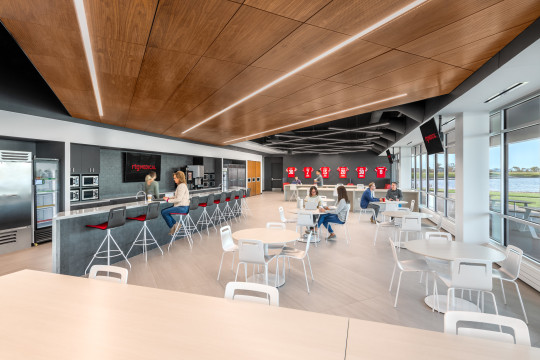

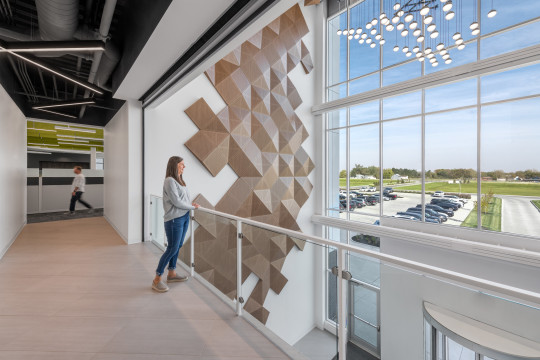

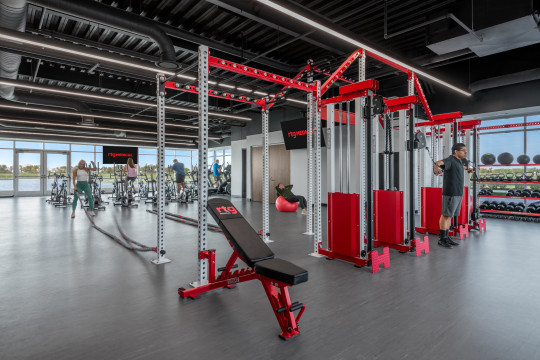
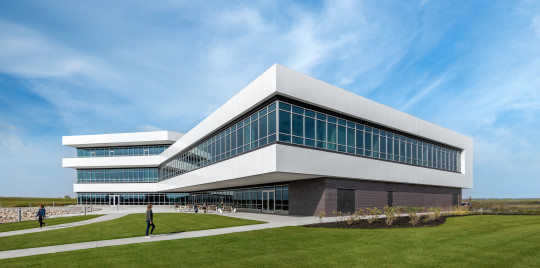
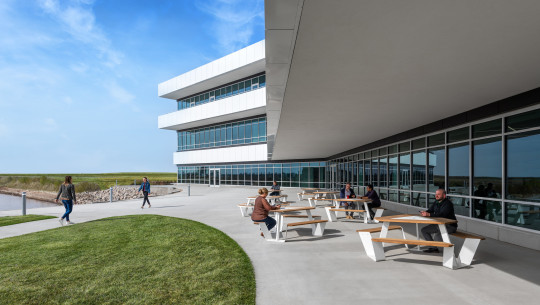
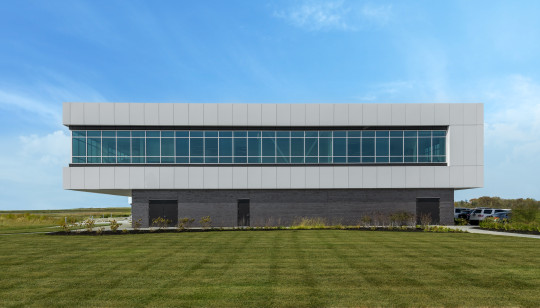
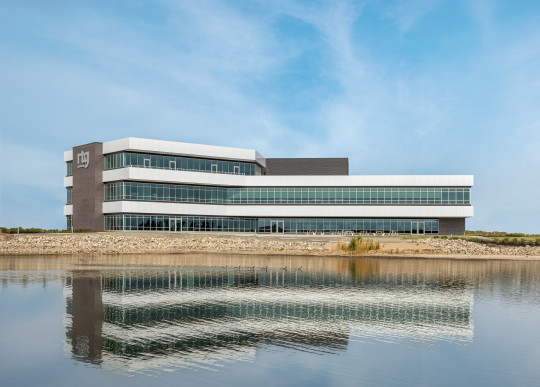

The 55,000 sf RTG Medical Headquarters located in Fremont, Nebraska was designed by DLR Group and built by Ronco Construction.
Inspired by RTG Medical’s work, placing traveling medical professionals across the nation, the interior spaces reflect a different geographic experience from coasts to peaks and cities. Through moments of adventure and wellness features, the design elevates the employee experience with a workout and yoga studio, basketball court, golf simulator, and a café hub stocked with healthy meal options. An expansive exterior space overlooks the lake and provides ample space for large functions, and kayaks are offered to employees looking to escape on the lake.
© Wade Griffith Photography 2023
#architecturephotography#medicalheadquarters#medicaldesign#nursing#radiology#cardiopulmonary#healthcarefacility#surgerycenter#laboratory#healthcaredesign#interiordesign#fremontne#nebraska#officedesign
0 notes
Text
Out-of-This-World Charm: Nebraska's Most Popular Home Takes You Back to the 1970s Spaceship Era
Out-of-This-World Charm: Nebraska's Most Popular Home Takes You Back to the 1970s Spaceship Era #Moving #FindABroker #Referral #Relocation #RealEstate
The most popular home of the week featured on Realtor.com is a unique spaceship-style residence located in Bellevue, Nebraska. The unconventional design of the house resembles a futuristic spacecraft, capturing the attention of many. The home boasts a distinctive rounded shape with sleek lines and large windows, providing an abundance of natural light. Its interior showcases modern amenities and…

View On WordPress
0 notes
Text
Places to visit in Omaha, Nebraska
Found in the midwest, Omaha, Nebraska is a wonderful town that provides a range of enjoyable and enjoyable things to do. There are additionally lots of parks to appreciate. The Omaha location has lots of events and events, making it a wonderful area to visit in the summertime and also winter.
The city's Old Market area is a great area to shop, consume, and learn about Omaha's rich history. The community has been provided on the National Register of Historic Places, and contains shop shops as well as restaurants. Several art galleries are additionally found in the neighborhood, making it a fantastic place to check out. There are additionally numerous historical walking tours to take.
The Bemis Center for Contemporary Art is a special location that is house to a number of different exhibits. In addition to irreversible art screens, the structure organizes a number of immersive curricula throughout the year. The museum additionally has a permanent global artist-in-residence program. This gallery includes revolving screens, which are commonly based upon Omaha's rich history. Several of the past displays have included dinosaurs, music instruments, as well as the Byron Reed Collection.
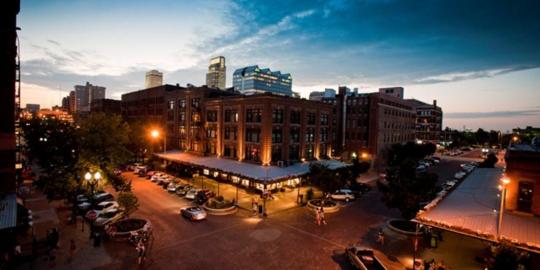
The Henry Doorly Zoo and also Fish tank is one of the top zoos worldwide. It's huge and also features several displays. This zoo is regularly rated among the Top 5 zoos in the world. You can additionally see the Dome Desert as well as Existed Forest, which are 2 of one of the most prominent destinations. It's an excellent area to invest a day with your household. The park has two miles of treking routes and also is home to a tiger and also cheetah breeding center. The zoo is certified by the Organization of Zoos and also Aquariums.
Omaha's very own amusement park, Fun-Plex Waterpark & Rides, is additionally an excellent place to spend the day. The park has flights as well as waterslides, along with a tiki bar. You can likewise participate in bumper boats and go-kart racing. The park is open from Memorial Day to Labor Day. You can likewise enjoy the wave swimming pool and Lazy River. Omaha also has an interior amusement park, the RiverFront, which is a public-private effort that is a three-park development.
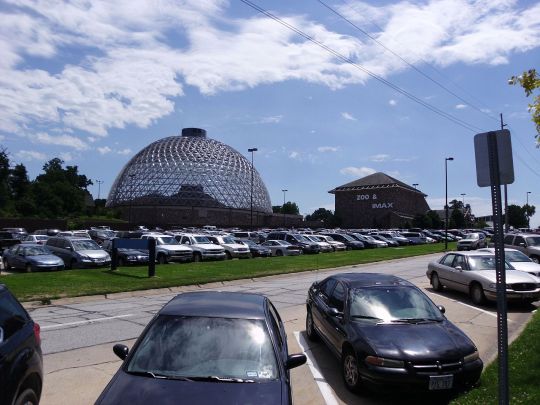
The Durham Museum is an outstanding means to learn about Omaha's history. It's an interactive experience that consists of a large version train and also old-fashioned soda fountain. It has turning exhibitions, along with traveling special exhibitions. You can find a variety of historical items, such as old railway cars and also a replica of a turning rope bridge over a tropical jungle.
There's additionally an authentic soda fountain as well as a sundae store. There are additionally several historical buildings as well as train cars and trucks on screen. You can additionally participate in a few totally free activities, such as scavenger hunts and walking scenic tours. For art enthusiasts, there are a number of museums in Omaha, including the Joslyn Art Gallery.
The Omaha Children's Museum is a hands-on center for children. It lies in the Old Market District. It has loads of exhibitions and is suitable for families to appreciate. There are special events, programs, and birthday event choices. There are a range of long-term and also rotating exhibits concentrating on zoology, science, as well as creativity.
The Bob Kerrey Pedestrian Bridge is just one of the many lovely sights in Omaha. It is completely complimentary to walk throughout and looks splendid in the evening. Situated near Omaha Plaza, the bridge expands a number of thousand feet in addition to is outstanding for cycling or walking.
Another location that is delightful for member of the family is the Omaha Farmers Market, which includes a substantial range of vendors and a historical sensation. It's additionally a superb area for relaxing and also buying.
Found in the Omaha location, Heroes Lawn Care is a property and commercial landscape design as well as lawn service firm. They are a reliable company that takes pride in their services, that makes them the obvious selection for any kind of Omaha house owner looking to maintain their yard looking top notch.
Picking Heroes Lawn Care of Omaha for your lawn-care demands will certainly ensure you have the tastiest, most weed-free, greenest lawn around.

Heroes Lawn Care
402-933-1985
https://heroeslawncare.com/omaha-ne
1 note
·
View note